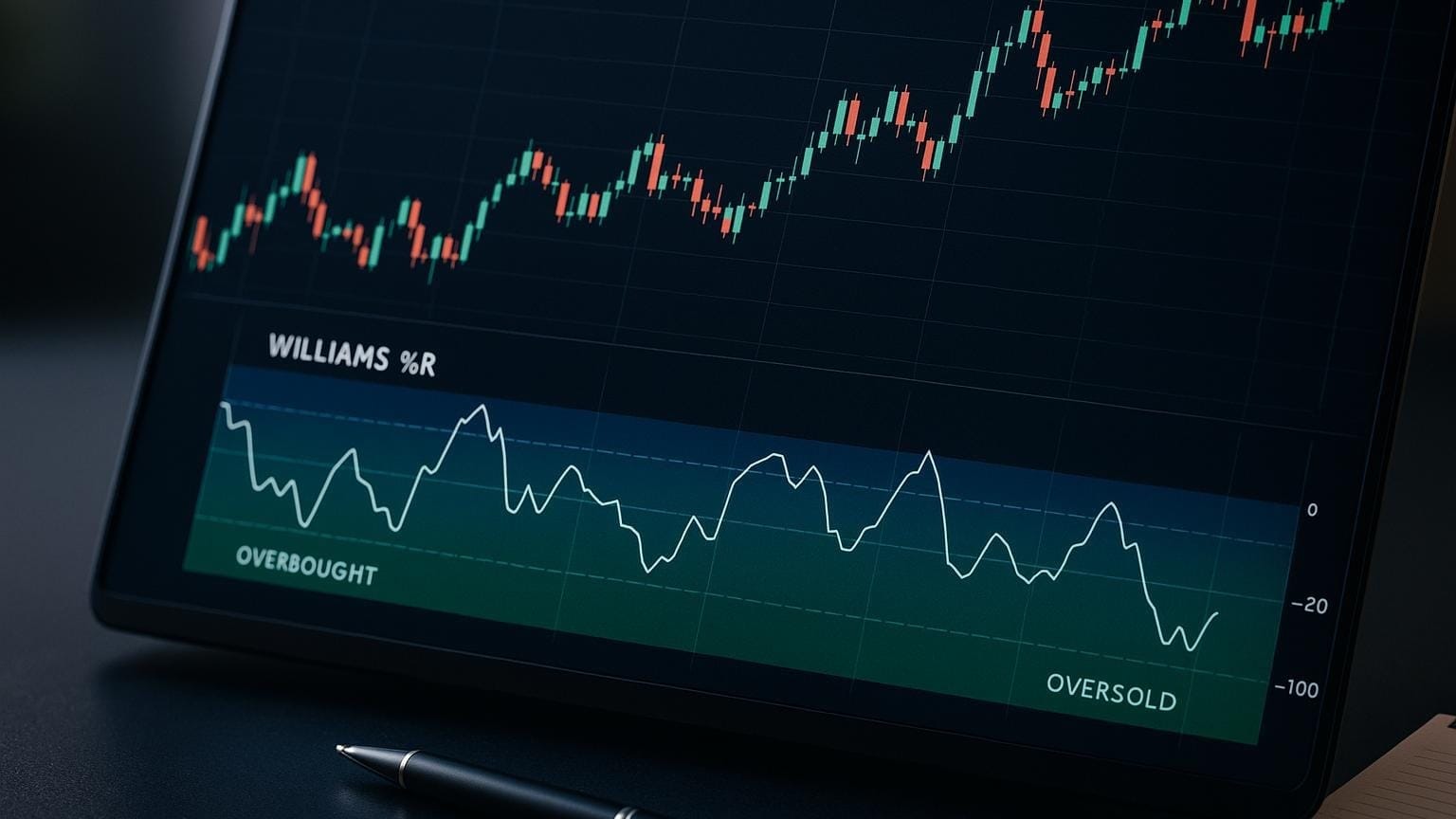Explore the regulatory gray area of retail prop firms, highlighting risks for traders, key due diligence steps, and the importance of informed choices.
Retail proprietary trading firms (prop firms) offer traders access to capital in exchange for passing evaluation tests and sharing profits. However, these firms often operate in a regulatory gray area, leaving traders exposed to risks like sudden account closures, payout disputes, and data privacy concerns. Unlike regulated brokers, prop firms are not required to segregate funds, maintain financial reserves, or follow strict transparency rules.
Key Points
- How Prop Firms Work: Traders pay fees to pass evaluations for access to firm capital, with profit-sharing models varying by firm.
- Regulation Gaps: Prop firms are largely unregulated in the U.S., avoiding oversight from agencies like the SEC, CFTC, and NFA.
- Risks for Traders: Unregulated firms can change rules, delay payouts, or shut down without recourse for traders.
- Due Diligence: Traders should verify a firm’s reputation, payout history, and legal documentation before joining.
- Future Changes: Regulatory updates may include stricter rules on marketing, transparency, and evaluation practices.
To protect yourself, research thoroughly, review all terms, and consider using advanced tools to refine your trading strategies with AI Backtesting. While the industry’s regulatory landscape evolves, traders must remain vigilant and informed.
Are Prop Firms Even Legal?
Current U.S. Regulatory Framework
Navigating the regulatory world of retail prop firms in the U.S. can feel like stepping into a maze. With a mix of federal and state rules—and plenty of gaps in between—these companies often find themselves operating in a murky legal space. For traders, understanding how these rules apply (or don’t) is essential when evaluating a firm’s credibility and practices.
Federal Oversight: SEC, CFTC, and NFA
At the federal level, three key players oversee financial markets: the Securities and Exchange Commission (SEC), the Commodity Futures Trading Commission (CFTC), and the National Futures Association (NFA). While traditional broker-dealers and futures commission merchants are subject to SEC and CFTC regulations, retail prop firms often sidestep these rules. Why? Because these firms trade with their own money and charge traders evaluation fees, which keeps them outside the scope of traditional oversight.
The NFA, responsible for overseeing futures trading professionals, also doesn’t typically regulate retail prop firms. These firms don’t act as introducing brokers or manage pooled investments, leaving a notable gap in federal oversight. This absence of regulation is striking, especially as the retail prop trading sector continues to grow.
State-Level Regulations and Blue Sky Laws
Even though federal agencies may not directly oversee retail prop firms, state-level regulations can still come into play. One key area of state oversight is through Blue Sky Laws, which aim to protect investors from fraud and deceptive practices. For an overview of how these laws work across states, see this plain-English guide on Blue Sky laws and their purpose.
These laws differ from state to state but generally require certain financial activities to be registered with state regulators. For retail prop firms, this often means submitting notice filings when offering services to residents of a particular state. Filing fees and strict deadlines—sometimes as short as 15 days from the first sale to a state resident—add to the complexity[1]. And because these laws vary widely across all 50 states, compliance can be a logistical headache[1].
Beyond Blue Sky Laws, other state-specific requirements add another layer of complexity. The result is a patchwork of rules that, when combined with federal exemptions, leaves retail prop firms operating in a regulatory gray zone.
The Unregulated Gray Area
The gaps in both federal and state oversight create a significant gray area where many retail prop firms operate. While these firms avoid the stricter rules that traditional brokers face, they are not entirely free from regulatory obligations. This lack of consistent oversight can lead to risks for traders.
For example, without standardized federal rules, there’s no uniform requirement for financial reporting, capital reserves, or customer protections. Firms can adjust their policies—such as payout terms or fee structures—with little regulatory restraint. When enforcement does happen, it’s usually reactive, addressing problems only after traders have already been affected.
For traders, this uncertainty means taking on more responsibility. Without routine inspections or clear guidelines from regulatory bodies, traders must dig into a firm’s background themselves. Researching a firm’s financial stability, payout history, and overall legitimacy becomes critical. In this fragmented regulatory environment, the burden of due diligence falls squarely on the trader, not the system designed to protect them.
Risks of Using Unregulated Prop Firms
Unregulated prop firms exist in a murky space without the protections and oversight that come with regulation. This lack of oversight can expose traders to risks they wouldn’t typically face with regulated financial institutions. Without the safeguards provided by regulatory bodies, traders need to tread carefully and thoroughly investigate before investing their time or money. Let’s break down some of the specific risks involved.
Payout Disputes and Sudden Shutdowns
Unlike regulated brokers, unregulated prop firms don’t have to follow strict rules when it comes to payouts or maintaining financial reserves. This means they can change payout policies on a whim or delay payments without any accountability. If the firm runs into financial trouble, it could shut down overnight, leaving traders with little to no recourse for recovering their funds. On the other hand, regulated brokers are held to high standards, including regular financial audits and capital requirements designed to protect their clients.
Lack of Protection for Funds and Personal Data
Regulated brokers are required to separate client funds from their own operating funds—a practice called segregation of customer assets. For securities, see the SEC’s investor protection framework; for futures, the CFTC requires customer funds to be held in segregated accounts at qualified institutions. Unregulated prop firms, however, often don’t follow this practice, which puts traders’ earnings at risk if the firm collapses. Beyond financial risks, these firms may also have weak or inconsistent data security measures. Unlike regulated brokers, which must adhere to strict data protection policies, unregulated firms may leave sensitive information exposed. Additionally, regulated brokers often carry insurance to safeguard client assets in case of failure—something unregulated firms are far less likely to offer.
Misleading Marketing and Ambiguous Terms
Unregulated firms frequently rely on flashy marketing that downplays risks and skips over important details. This can lead to unclear terms regarding payouts, account policies, or evaluation criteria. Fee structures can also be tricky, with hidden charges that aren’t disclosed upfront, making it harder for traders to fully understand what they’re signing up for.
Given these risks, it’s crucial for traders to do their homework. Carefully review all documentation, ask questions, and make sure you fully understand the terms and conditions before getting involved with any prop firm.
How Regulated Brokers Provide Protections
When comparing regulated brokers to unregulated proprietary (prop) firms, the differences in trader protections are striking. Regulated brokers in the United States operate under strict oversight, ensuring safeguards that are often missing in unregulated environments. These protections help traders make better-informed decisions about where to invest their capital and highlight the importance of understanding the role of regulation in trading.
Regulatory Requirements for Brokers
In the United States, regulated brokers are monitored by federal agencies like the Securities and Exchange Commission (SEC), the Commodity Futures Trading Commission (CFTC), and the National Futures Association (NFA). These agencies enforce rigorous standards to ensure brokers operate transparently and responsibly.
Key requirements for regulated brokers include:
- Licensing: Brokers must obtain proper authorization to operate legally.
- Capital Reserves: They are required to maintain sufficient capital to ensure financial stability.
- Transparency: Regular audits and detailed financial reporting ensure brokers remain accountable.
Transparency rules are particularly important. Brokers must clearly disclose their fee structures, trading conditions, and business practices, giving traders a clear understanding of what to expect. This level of oversight allows regulators to monitor brokers’ financial health and intervene if necessary, reducing risks for traders.
Protections for Traders: SIPC Insurance and Fund Segregation
These regulatory measures translate directly into protections for traders. One of the most critical safeguards is fund segregation, which ensures that client funds are kept separate from the broker’s operational accounts. This means that even if a broker faces financial trouble, your money remains protected.
Another layer of protection comes from SIPC insurance. The Securities Investor Protection Corporation (SIPC) provides coverage of up to $500,000 per customer account, including a $250,000 limit for cash claims. While SIPC doesn’t cover market losses, it protects your funds in the event of broker insolvency.
For traders in forex and futures markets, similar protections apply. The CFTC mandates that futures commission merchants keep customer funds in segregated accounts. Additionally, many brokers go beyond these requirements by securing extra insurance coverage.
Regulated brokers also provide formal dispute resolution mechanisms. For instance, the NFA offers an arbitration program, giving traders structured channels to resolve conflicts efficiently.
Comparison Table: Regulated Brokers vs. Retail Prop Firms
| Protection Feature | Regulated Brokers | Retail Prop Firms |
|---|---|---|
| Regulatory Oversight | Supervised by SEC, CFTC, and NFA with audits | Limited oversight; operate in regulatory gray areas |
| Fund Protection | Segregated funds protected by SIPC insurance | No fund segregation; trader fees are at risk |
| Leverage Limits | Capped at 50:1 for major currency pairs (NFA/forex investor alert) | Often 500:1 or higher, increasing risk |
| Transparency Requirements | Clear disclosure of fees and terms | Complex and often unfavorable terms |
| Dispute Resolution | Formal options like NFA arbitration | Little to no legal recourse |
| Capital Requirements | Must meet minimum net capital standards | No standardized capital requirements |
| Business Model | Trades client funds with consent | Traders use firm capital for profit sharing |
One of the starkest contrasts lies in leverage. Regulated brokers are limited to a 50:1 leverage ratio for major currency pairs, helping to manage risk. Prop firms, on the other hand, often offer leverage as high as 500:1, which can lead to rapid losses during volatile market conditions.
The difference in accountability is also clear when looking at past events. For example, when regulated broker MF Global collapsed in 2011, approximately 93% of segregated customer funds were eventually returned to traders through a trustee process. In contrast, unregulated prop firms typically offer no recourse for traders who lose evaluation fees or face sudden closures.
In short, the regulatory framework governing brokers creates a level of accountability and protection that is largely absent in the prop firm space. These safeguards allow traders to better manage risk and navigate the complexities of modern trading with greater confidence.
What to Look for Before Choosing a Prop Firm
Navigating the unregulated world of prop firms requires careful research to avoid unnecessary risks. A thorough evaluation can help identify firms that operate responsibly and protect your trading capital.
Checking Reputation and Transparency
One of the best signs of a reliable firm is how long it has been in business. Firms with several years of experience tend to have stable operations and a track record of handling different market conditions. Newer firms might not have the same level of reliability or expertise.
Client feedback is another important factor. While testimonials on a firm’s website can be helpful, they might not tell the full story. For a clearer picture, check independent sources like trading forums, social media groups, and review websites. These platforms often reveal honest opinions about payout reliability, customer service, and platform performance.
When reading reviews, pay attention to patterns. Consistent complaints about delayed payments or poor customer service are major red flags. On the other hand, firms that handle payouts efficiently and resolve disputes fairly are worth considering.
Transparency is key. A trustworthy firm will clearly explain its trading conditions, risk policies, and fee structures. Look for firms that openly discuss how they operate, how they make money, and how profit-sharing works. This information should be easy to find on their website, in their documentation, or through customer service.
Even though most prop firms aren’t regulated like traditional brokers, they should still have proper business registrations or affiliations. If a firm lists registration details on its website, take the time to verify them through official channels.
Reviewing Legal Documentation and Terms of Service
A firm’s website and content can reveal a lot about its professionalism. A well-maintained site should provide clear information about risks, trading rules, and compliance measures. It should also include contact details, a physical address, and background information about the firm.
When reviewing legal documents, focus on the terms of service and user agreements. These should clearly outline your rights, the firm’s responsibilities, and how disputes are handled. If the language is overly complicated or vague, it could be a sign that the firm is trying to hide unfavorable terms.
Testing customer service is another way to gauge a firm’s reliability. Before committing any funds, ask specific questions about their fees, payout processes, and operations. A responsive and knowledgeable support team is a good indicator of a firm’s transparency.
Legitimate firms should also be willing to share their business registration certificates and audit reports. If a firm refuses to provide this information or claims it’s “proprietary,” proceed with caution.
Finally, research the firm’s complaint history. Check government databases for any violations, disciplinary actions, or legal disputes.
Checklist for Vetting Prop Firms
| Evaluation Category | Key Verification Steps | Red Flags to Avoid |
|---|---|---|
| Business Legitimacy | Verify registration and physical address; Check history (2+ years preferred) | No verifiable registration; P.O. box address; Aggressive marketing from new firms |
| Financial Transparency | Review fee schedules and profit-sharing terms; Confirm payout timelines | Hidden fees; Unclear profit-sharing terms; Vague payout processes |
| Documentation Quality | Check terms of service, audit reports, and risk disclosures | Complex legal language; Missing risk disclosures; Refusal to provide documents |
| Community Feedback | Read independent reviews; Engage with traders on forums and social media | Negative reviews; Complaints about delayed payouts; Poor customer service |
| Customer Support | Test response times; Assess staff knowledge; Check availability across time zones | Slow responses; Evasive answers; Limited contact options |
| Technology Platform | Test platform stability, demo account performance, and data feed reliability | Frequent outages; Limited tools; Poor execution quality |
It’s also important to keep an eye on the firm after you’ve signed up. Join trader communities focused on your chosen firm to stay updated on any changes or issues.
Fee structure analysis is another critical step. Look at all potential costs, including evaluation fees, monthly subscriptions, profit splits, and withdrawal charges. Calculate the total cost over time to understand your financial commitment. Transparent firms will provide a clear breakdown of fees upfront.
Finally, focus on firms that prioritize trader development. The best firms invest in education, offer ongoing support, and set fair evaluation criteria that reward genuine trading skill—not just lucky outcomes. These measures can help you manage risks and succeed in an unregulated trading environment.
Future of Prop Firm Regulation in the U.S.
The regulatory environment for retail prop firms is undergoing significant changes. What was once a largely unregulated space is now moving toward formal oversight and standardized rules. These changes aim to create a more structured environment, giving traders clearer guidelines to navigate and adapt their strategies.
Possible Regulatory Frameworks Under Discussion
Currently, prop firms operate with minimal oversight, but this is expected to change. Future regulations are likely to address recurring issues. For instance, stricter reviews of evaluation criteria and opaque payout structures are anticipated. Misleading marketing practices, such as exaggerated success stories, may also come under scrutiny. Additionally, clearer distinctions between live and demo accounts could become mandatory. Instead of outright bans, regulators appear to favor measures such as licensing requirements, capital adequacy standards, regular audits, and Anti-Money Laundering (AML) procedures to formalize the industry.
Trends Toward Increased Oversight and Transparency
The push for stricter regulation is gaining momentum. For example, in 2025, the Australian Securities and Investments Commission (ASIC) issued warnings to financial influencers for promoting prop trading without proper disclosures [3]. The industry has also drawn attention due to the low success rate—fewer than 1% of traders achieve meaningful payouts, with many failing challenges or losing funded accounts due to harsh rules [2]. Other proposed measures include stricter capital requirements, standardized risk disclosures, and regular auditing to ensure firms operate transparently and maintain sufficient financial reserves. These trends suggest that the prop trading industry is moving toward a more accountable framework.
How Traders Can Prepare for Regulatory Changes
As new regulations emerge, traders must step up their preparation. Relying on marketing claims or testimonials won’t be enough. Instead, focus on strengthening core trading skills and building strategies that perform consistently across various market conditions. Keeping detailed records of agreements, communications, and trading performance with prop firms will also be crucial, especially as new consumer protections come into play. Staying updated on regulatory developments through industry news and official announcements will help traders adapt quickly. Finally, refining essential skills like risk management and maintaining consistent profitability will be vital for long-term success.
The move toward increased regulation signals a maturing industry. While it may create short-term challenges, the long-term effects should provide better protections for traders and encourage more sustainable business practices among legitimate firms.
Tools for Strategy Development
As regulatory changes continue to reshape the prop trading landscape, traders need tools they can depend on to craft and test strategies capable of handling market volatility and shifting rules. Thanks to advancements in technical analysis platforms and artificial intelligence, strategy development has evolved from guesswork into a data-driven process. These capabilities help traders create strategies that can perform consistently under varying market conditions.
The Role of Technical Analysis and AI
In modern prop trading, advanced technical analysis is essential, and AI-powered systems now provide capabilities that were once exclusive to large institutions. These technologies can analyze market data in real time, uncovering patterns and opportunities that might escape human observation.
AI has changed how strategies are developed and tested. By processing multiple timeframes at once, identifying complex market patterns, and offering automated feedback on performance, AI systems enable traders to make quicker and more precise decisions.
LuxAlgo AI Backtesting Assistant

One standout platform is LuxAlgo’s AI Backtesting Assistant, LuxAlgo’s AI agent for creating trading strategies. It provides automated, data-driven analysis and performance feedback so traders can optimize strategies while minimizing risk in an ever-changing market environment.
LuxAlgo provides advanced features including auto-pattern detection, signal algorithms, and real-time divergence detection, paired with screeners and backtesters on TradingView that let traders quickly filter setups across assets and timeframes.
What sets LuxAlgo apart is the ability to evaluate strategies across multiple tickers and timeframes simultaneously. The platform provides performance analytics and supports simulated trading, enabling traders to test ideas on historical data. By adjusting parameters based on AI suggestions, users can see how strategies might perform under different market conditions.
Plans & Pricing
- Free Plan: $0 lifetime access; includes hundreds of tools across 5+ platforms.
- Premium: $39.99/month—advanced signals, alerts, and oscillator tools on TradingView.
- Ultimate: $59.99/month—includes full access to the AI Backtesting platform.
To get started quickly, explore the AI Backtesting documentation for workflow examples and strategy ideas.
Regular Strategy Testing for Long-Term Success
In today’s fast-changing market, continuous strategy testing and refinement are essential. The most successful traders understand that strategy development isn’t a one-and-done task; it’s an ongoing process.
Regular testing allows traders to identify and address weaknesses before they lead to costly mistakes. This is particularly critical in prop trading, where firms often enforce strict rules around maximum drawdowns and daily loss limits. A strategy that works well in trending markets may fail during periods of high volatility or sideways movement.
To stay ahead, adopt a systematic approach to evaluation: set clear objectives and risk parameters, use reliable technical analysis and AI tools, stress-test strategies on relevant historical data, and regularly review performance metrics. Monitor changes in market conditions and firm rules, while documenting adjustments and results for future reference.
Conclusion: Key Takeaways for Traders
Reflecting on the risks, protections, and due diligence strategies we’ve discussed, here are key points for traders to keep in mind. The retail prop trading industry in the United States offers opportunities for growth but comes with challenges. While these firms provide access to capital and a chance to earn, the lack of robust regulatory oversight leaves traders vulnerable to risks that could jeopardize progress.
Understanding Risks and Protections
Regulated brokers come with safeguards like SIPC insurance, segregated funds, and structured dispute resolution processes. Unregulated prop firms often lack these protections, leaving traders exposed to potential losses, including their profits and evaluation fees. A major concern is the misleading marketing language some firms use, implying protections similar to brokers while operating under entirely different legal frameworks.
Steps to Evaluate Prop Firms
To navigate this landscape, thorough research is crucial. Start by verifying the firm’s legal registration and carefully reviewing its payout history and contract terms. A firm with a consistent track record of payouts over several years is often a sign of stability and reliability. Be cautious of newer firms that make bold marketing promises or offer terms that appear too favorable—they might not be sustainable.
Also, consider the firm’s business model. Firms that rely heavily on evaluation fees rather than trader success may have conflicting priorities. Look for companies that invest in their traders through resources like educational tools, mentorship programs, or innovative technology platforms. Beyond vetting firms, traders can enhance their edge by incorporating advanced technology into their strategies.
Leveraging Technology for Smarter Trading
Adopting data-driven strategies can help traders succeed in any regulatory environment. LuxAlgo AI Backtesting enables traders to test and refine strategies across market conditions before risking capital—particularly useful when working with prop firms that impose strict drawdown limits and performance benchmarks.
The biggest advantage of strong, well-tested strategies is their ability to deliver results regardless of the regulatory framework. Whether you’re trading with a regulated broker, a trusted prop firm, or your own capital, having a solid strategy gives you the flexibility and control needed to navigate your trading career effectively.
As regulations evolve, the combination of careful firm evaluation, regulatory awareness, and advanced trading tools lays a strong foundation for long-term success in trading.
FAQs
How can traders choose a trustworthy retail prop firm when regulations are limited?
When choosing a dependable retail prop firm, it’s essential to focus on clarity and trustworthiness. Start by examining their website—does it look professional and provide detailed information about their operations and history? A firm with a solid track record of timely payouts is a strong indicator of reliability.
Take time to read independent reviews on reputable platforms. Pay attention to feedback from other traders and lean toward firms that consistently receive positive ratings.
It’s also worth checking whether the firm is registered or connected to any official organizations. While many operate in unregulated environments, those that are upfront about their practices and maintain a good reputation are generally safer choices. Always conduct thorough research to ensure your funds are in good hands.
How could future regulations affect retail prop firms and traders who use them?
Future regulations are anticipated to tighten oversight and introduce stricter compliance measures for retail prop firms. While this could drive up operational costs, it may also encourage clearer and more transparent business practices, offering traders better safeguards.
On the flip side, these regulations could reduce the flexibility of some firms, potentially forcing them to rethink their business models or even exit the market. For traders, this might mean dealing with new compliance processes and adapting to a more tightly regulated trading landscape, possibly affecting access to funded accounts and altering the overall trading experience.
What are the best ways for traders to reduce risks when working with unregulated prop firms?
When trading with unregulated prop firms, taking steps to protect yourself is essential. Start with thorough research. Investigate the firm’s reputation, payout history, and level of transparency before committing any funds. Check reviews and testimonials, and look for evidence of consistent and reliable operations to steer clear of scams.
Next, focus on risk management. Tools like stop-loss and take-profit orders can help limit your losses, while avoiding over-leveraging will keep your trades under control. Diversifying your trading strategies is another smart move—it reduces your reliance on any single firm and lowers the risk of being caught off guard by sudden shutdowns or payout delays.
Lastly, take a cautious approach. Keep an eye on the firm’s activities and avoid putting all your capital into one place. By spreading your investments and staying alert, you can better protect yourself in the unpredictable world of unregulated trading.
References
LuxAlgo Resources
- LuxAlgo – Official Site
- AI Backtesting Assistant
- AI Backtesting Documentation
- Traditional Proprietary Trading: An Insider’s Guide
- Managing Trade Risk & Surviving Consecutive Losses
- Technical Analysis (Topic)
- AI Backtesting Assistant: Complete Breakdown
- Triangular Momentum Oscillator — Real-Time Divergences
- Stress-Testing Trading Strategies
- LuxAlgo Pricing
- LuxAlgo Blog
- Backtesting (Topic)
- Indicators (Topic)
- Risk Management (Topic)
- Trading Strategy (Topic)
External Resources
- U.S. Securities and Exchange Commission (SEC)
- Commodity Futures Trading Commission (CFTC)
- National Futures Association (NFA)
- Securities Investor Protection Corporation (SIPC)
- Blue Sky Laws Overview (Investopedia)
- NFA: Forex Investor Alert & Leverage
- Australian Securities and Investments Commission (ASIC)
- Blue Sky Law Filing Nuances (PPM Lawyers)
- Regulatory Changes in Prop Trading (FundedSquad)
- Prop Firms & Regulation (PropFirmsTech)
- MF Global (Background)








